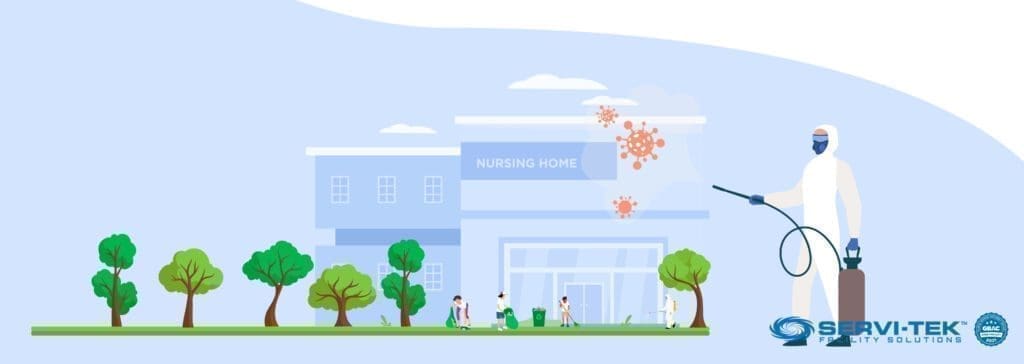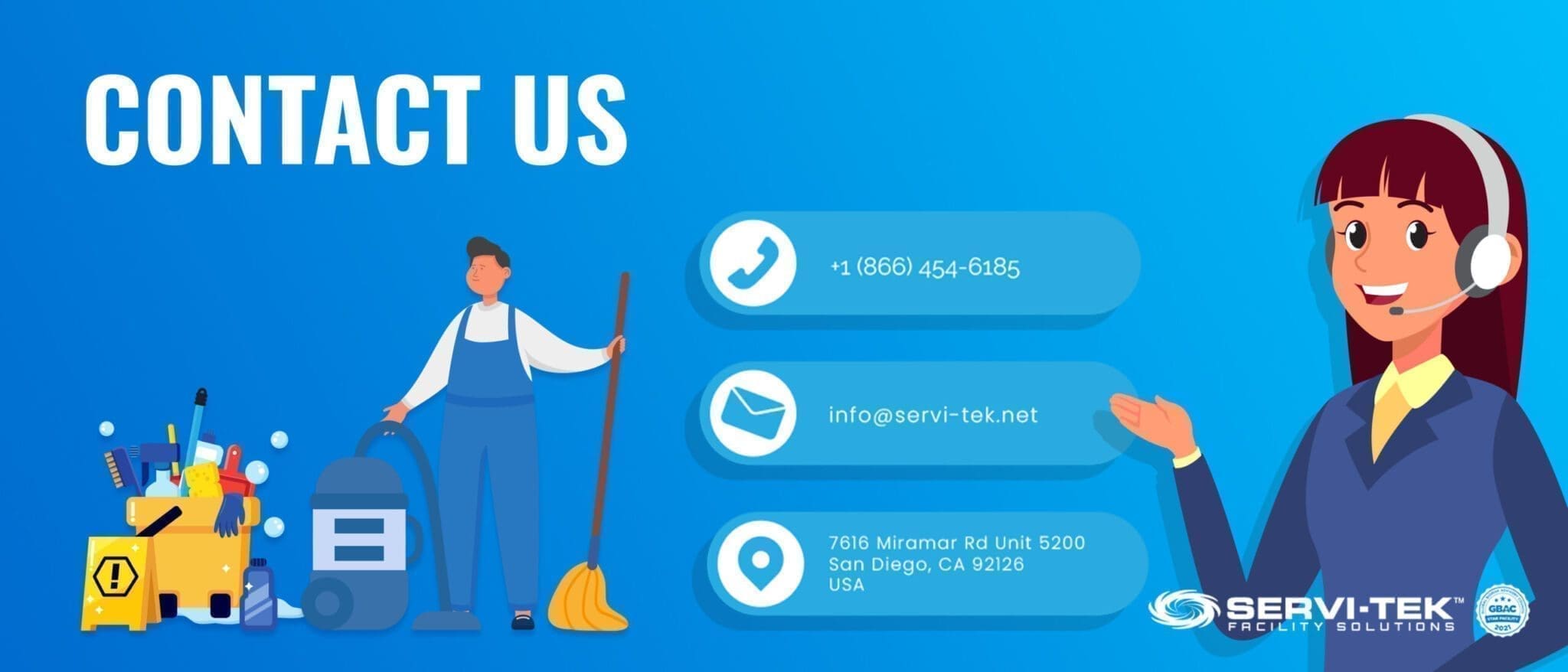How to Disinfect and Optimize Assisted Living Facilities?

The Administration for Community Living (ACL), a federal agency, recently outlined how active the long-term care market is in the U.S. Long-term care generally involves providing supportive services for individuals that need some personal assistance on a day-to-day basis.
In many cases, long-term care might involve patient care or clinical care, such as that provided by a nurse or therapist. It also may include assistance with activities of daily living, such as bathing, transportation, meal preparation, and more.
What is the main goal of long-term care? The goals and responsibilities depend on the needs of the individual requiring care.
For example, helping seniors with maintaining independence, increasing their energy level, and paying special attention to limiting the risk of injury. Additional responsibilities might include assisting people such as seniors with deep-cleaning or answering questions regarding medical equipment.
Long-term care may be performed by staff members in a senior living facility, memory care unit, or adult day care center. In some cases, caregivers might assist in independent living homes, retirement homes, or other senior care sites.
Instead of having an institution or facility for a home, more individuals choose home care today as the best option. With in-home care, seniors can “age in place” with visiting caregivers including family members, personal care workers, or clinical care staff.
Understanding Assisted Living Facilities

One of the most common questions involves the use, activity, and structure of assisted living facilities. The National Center for Assisted Living represents an excellent resource or application for understanding these settings.
Some of the most common types of services that exist on these sites include:
- The presence of onsite security or supervision 24 hours per day
- Programming for residents such as exercise activities and wellness programs
- Cleaning and maintenance performed by building service contractors, janitorial staff, and maintenance personnel
- Food and dining services
- Dispensing of medications
- Group transportation
Regular Occupants of an Assisted Living Facility
Questions often arise regarding who typically enters an assisted living facility—outside of the population of residents. Those who are commonly present in these locations include caregivers, clinical care workers, management professionals, and building service contractors.
Developing Cleaning Solutions for the Safety of Residents in the Facility

Those in management teams who work in assisted living facilities should develop short-term and long-term programs for optimized senior living. Effective cleaning solutions involve implementing a daily cleaning schedule as part of a larger plan.
An effective cleaning schedule will ensure staff members understand the key responsibilities and the times for cleaning certain areas. For example, a centralized, daily schedule listing the times and frequency by room or place might be stored in an electronic application.
Having a written, standardized cleaning schedule is critical because of potentially high staff turnover. The cleaning schedule should not be confused with disaster planning documentation, a hazardous chemical program, or other emergency material.
Best Practices for a High-Traffic or Common Area
Depending on the arrangement of an assisted living facility, certain areas are continually in use or see a higher amount of traffic. A common area might include the front entrance desk area, the elevators, or any shared restrooms.
Depending on the amount of traffic, cleaning and disinfection might be required at tighter intervals—perhaps every two to four hours. This is particularly important because many of the seniors in these facilities have weakened immune systems, which pose greater health risks.
The Impact of COVID-19 on These Facilities

The COVID-19 pandemic challenged the management of these and other facilities with lots of occupants that might have close contact. Some of the basic best practices include the importance of social distancing, infection prevention measures, and maintaining personal protective equipment.
During the pandemic, close contact among residents, workers, and others that enter the premises became a primary concern. In long-term care, many of the residents have existing medical conditions and compromised immune systems making infection prevention a top priority.
Personal protective equipment is needed including facemasks, gloves, hand sanitizer, etc. Many facilities have implemented some of the newer best options including UV lighting for killing germs and enhanced filtration systems.
These measures help improve indoor air quality, limit airborne dust particles, and prevent cross-contamination.
In the post-pandemic period, the CDC now encourages owners and managers of assisted living facilities to refer to their state guidelines.
Environmental Cleaning Best Practices for Assisted Living Facilities
Assisted living centers pose risks of spreading germs because people tend to congregate and the population is vulnerable. Environmental cleaning involves the process of physical material removal such as dust particles, soil, or organic material, i.e., microorganisms.
Cleaning may involve a mechanical process of removing something with water, soap, and other agents. Disinfection goes a step further by using a chemical process to eliminate or inactivate harmful microorganisms.
Failing to initially clean a surface can impede the disinfection process by physically shielding the surface.
Cleaning Material and Supply Requirements
Commercial cleaning involves some preparation in terms of having the tools, equipment, and proper cleaning products available. Critical supplies might include personal protective equipment including masks and gloves, and hand sanitizer in areas without sinks.
The Environmental Protection Agency (EPA) Safety Steps for Disinfection

The EPA’s first critical disinfection step involves confirming that the products are EPA-approved by referencing List N. List N was updated during the COVID-19 pandemic and includes a host of products that demonstrate safety and effectiveness.
Products have an EPA Registration Number (Reg. No.) marked on the labeling in a format such as 12111-57-0214. The last four digits on the EPA Registration Number might vary because they signify “equivalent” products.
The next step is simple—carefully read the directions for use printed on the packaging. Some of the most important details involve applications for use, surface specifications, and product safety concerns.
Pre-treatment of all surfaces is necessary for removing any material that might limit the effectiveness of disinfection efforts. The pre-cleaning process will usually involve an application of detergent and water.
Another often overlooked aspect of the disinfection process is adherence to contact time or “dwell time” instructions. Here, the product manufacturer determines the exposure time necessary for maximizing “germ-killing” effectiveness.
In many cases, dwell time instructions will simply recommend applying the product and allowing it to dry on the surface.
The Importance of Safely Managing Cleaning Solutions and Materials
Cleaning and disinfection products are commonly mixed, diluted, or otherwise processed and placed into different containers. After doing so, all containers should be clearly labeled or otherwise marked to avoid potentially dangerous situations.
For example, many cleaning agents such as bleach or ammonia can have extremely dangerous interactions. Use caution when applying products for cleaning and disinfection indoors—particularly in tight spaces.
Properly ventilating the area might be necessary. Cleaning products also must be safely stored in sealed, durable containers.
When transitioning from one cleaning project to another, certain tools should always be cleaned or changed. This applies to microfiber cloths, mop heads, and others.
Best Practices for Soft Surfaces
Assisted living facilities typically contain furniture or furnishings composed of soft fabrics including seating, rugs, or drapery. Remember to read any instructions before proceeding to clean these objects, as many are sensitive.
Most of these materials can be cleaned or machine laundered using the warmest possible water and an appropriate soap or detergent. The EPA List N contains a classification of products approved for soft surfaces.
Proper Laundering
Many types of cleaning supplies require laundering such as linens or towels. Remember to always clean hampers or baskets used for storing soiled materials.
Ensuring Proper Ventilation
CDC guidelines encourage opening outdoor air dampers to limit the amount of recirculated air in the facility. This might not be a possibility during periods of extreme hot or cold weather.
Similarly, opening doors and windows is another means of introducing fresh, outdoor air to interior spaces. This process can be further enhanced by forcing air flow with a fan that is properly positioned and secured.
Another consideration is using a fan to push indoor air outside—essentially a means of exhaust. Many larger facilities will use fans mounted on high ceilings or roof-mounted models for upper exhaust and/or circulation.
The Importance of Excellent Product and Safety Training
Professional organizations that operate in the realm of commercial cleaning and disinfection recognize the importance of training their staff. Some of the critical training areas include proper use of equipment, accident prevention, and safely managing chemicals.
Most experts agree that effective staff training should involve a combination of classroom instruction and “hands-on” training. Based on the potential for staff turnover and other factors, cross-training is also strongly recommended.
Cleaning and disinfection teams should also be regularly evaluated as a means of ensuring that proper procedures are adhered to. Evaluation and feedback regarding work performance is a key component for internal quality control that creates more positive outcomes.
Professional Cleaning and Disinfection Services for Assisted Living Environments
Servi-Tek Facility Solutions creates customized commercial cleaning, janitorial, and maintenance service plans for all types of commercial facilities. We recognize that assisted living facilities must prioritize resident health and safety and will help you achieve this goal.
We will work with leadership including assisted living administrators, facility management professionals, and operational safety directors to create robust solutions. We invite professionals responsible for these operations to contact us using our ‘schedule a call’ feature for a web conference.




